| Vintage Pulp | Jun 29 2021 |

What's being stolen? A previous movie's most successful ideas.
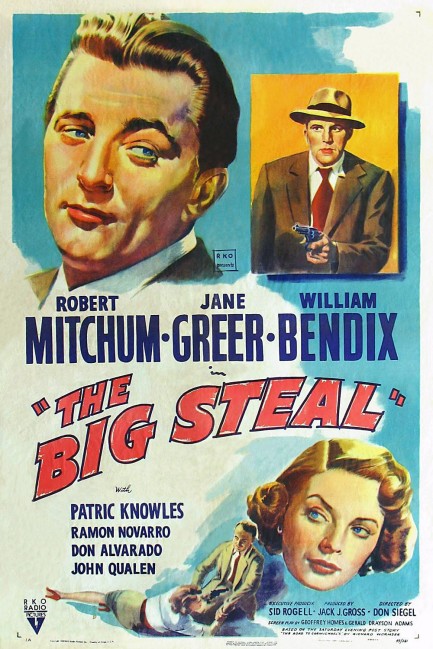
Every Hollywood star has that brief moment when they're invincible at the box office, but it seems as if Robert Mitchum, more than most others, was a guy who maintained his power for many years. When The Big Steal came out he'd already run the gauntlet of a drug bust, jail time, and the public repentance circuit, and seemed to emerge unscathed. The executive brains at RKO decided to match teflon Rob with Jane Greer in an attempt to replicate the pair's runaway success in the film noir monument Out of the Past. This time the studio went for a lot of banter and not much in the way noir style, as Mitchum plays an army lieutenant accused of a payroll robbery who pursues the real thief Patric Knowles through Mexico. Greer plays Knowles' fiancée, who he cold-heartedly divested of two-thousand bucks, because thieves are just a little more pragmatic than they are romantic.
The movie is fueled by that Mitchum/Greer chemistry, plus high speeds, resort wardrobe, wry looks, and the Out of the Past memories of movie audiences. Greer brandishes a gun again, just as in that seminal sequence in Out of the Past. Mitchum has a desperate fistfight, just as in Out of the Past. All of this retreading is supported by visually helpful location shooting in Veracruz and other areas of Mexico. The end result is a pleasant little chase film that's even comical at times. Or maybe the laughs came from our dark senses of humor. For example, you know how car pursuits sometimes go right through flocks of chickens, but the chickens never get hurt? In this movie one actually gets run over—at least if the numerous feathers drifting in the car's wake were any indication. That really amused us. Also nearly flattened were goats, a few cows, mules, children, and middle-aged ladies. In fact, all the near misses felt like a running gag about how Americans are always in a hurry.
Other aspects of the movie are equally tongue-in-cheek, including Mitchum's ugly-American stabs at Spanish, but however lightweight this is at times, in the end it's still categorized as a thriller, which means it needs to make pulses race. We wouldn't say it fully achieves that requirement, but it isn't bad either. Mitchum gonna Mitchum, and that's all a studio needed at this moment in time to make a movie work. He'd go on to headline Where Danger Lives, Angel Face, and a long string of good-to-middling dramas and noirs, all the way up to his other cinematic monuments, 1955's The Night of the Hunter and 1962's Cape Fear. The Big Steal is an okay flick, but its true value may be that it shows what the Mitchum charm can do for material that doesn't even deserve him. It premiered in the U.S. today in 1949.
Other aspects of the movie are equally tongue-in-cheek, including Mitchum's ugly-American stabs at Spanish, but however lightweight this is at times, in the end it's still categorized as a thriller, which means it needs to make pulses race. We wouldn't say it fully achieves that requirement, but it isn't bad either. Mitchum gonna Mitchum, and that's all a studio needed at this moment in time to make a movie work. He'd go on to headline Where Danger Lives, Angel Face, and a long string of good-to-middling dramas and noirs, all the way up to his other cinematic monuments, 1955's The Night of the Hunter and 1962's Cape Fear. The Big Steal is an okay flick, but its true value may be that it shows what the Mitchum charm can do for material that doesn't even deserve him. It premiered in the U.S. today in 1949.
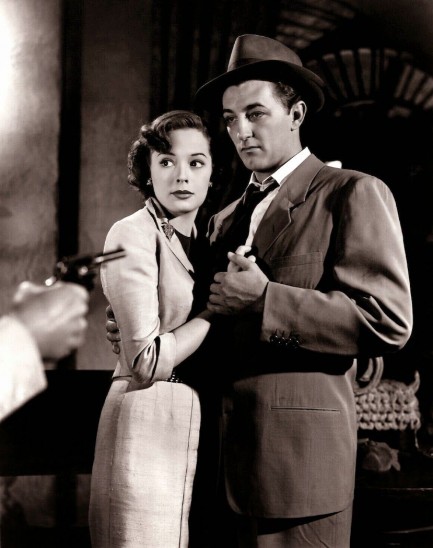
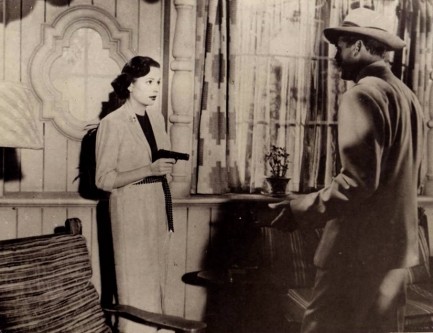
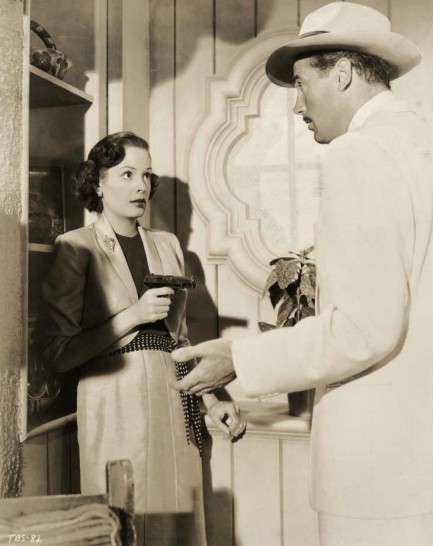

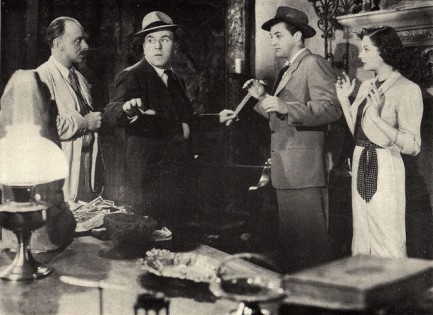
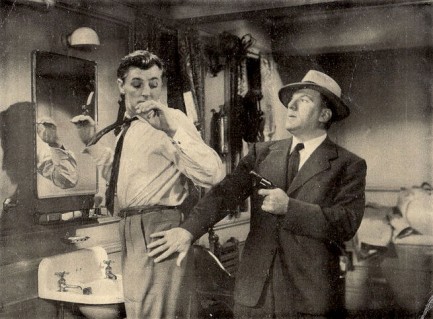
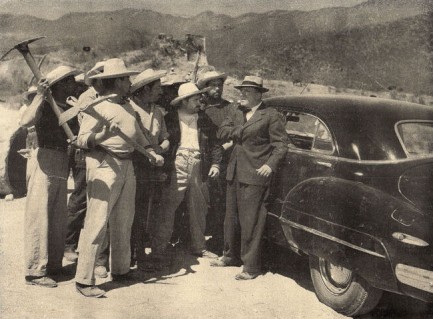
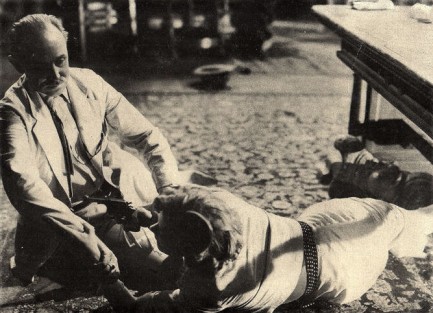
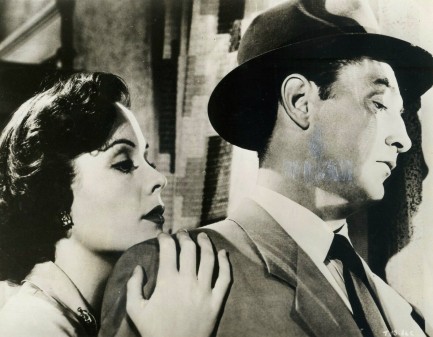
| Vintage Pulp | Feb 4 2016 |

The prince and the pauper are one and the same.
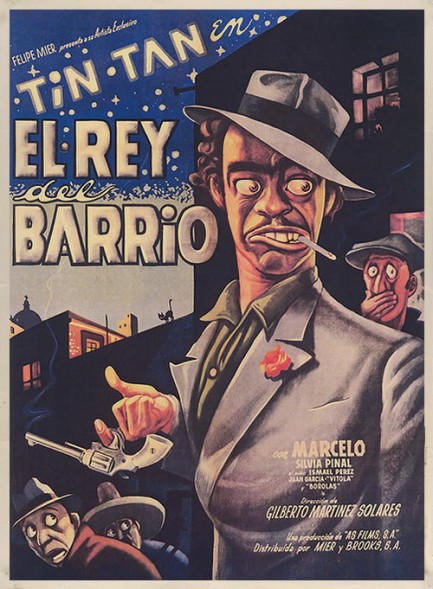
This striking promo for the Mexican comedy El rey del barrio was painted by Ernesto Garcia Cabral, who we discussed briefly in this post featuring a small collection of his creations. Garcia Cabral was born in Huatusco, Veracruz and would become one of the most published artists in Mexico, churning out cartoons, caricatures, and general illustrations. His early work, with its stylishly elongated flappers and sheiks, fits right into the art deco period, and his later work evolved to take on the form you see above. El rey del barrio premiered in Mexico today in 1950, and tells the story of a working class Joe who leads a double life. By day he's a kindly wage earner, but at night he dons zoot suit and cape—yes, cape—to become a thief and gangster. He's in love with a girl from his neighborhood, but keeping his second identity secret becomes increasingly harder as he bungles his way from caper to caper. You've see this story before, but probably not set in 1950s Mexico, and not with Germán Valdés, who was a rare comedic talent in the spastic mode of Jerry Lewis or Bob Hope. Silvia Pinal as his love interest is just the right mix of sweet and sassy. Add a bit of singing and some sexy nightclub dance numbers and you've got yourself a winner. The potential bad news is that there's no English language or subtitled version, as far as we know, but you've all learned Spanish by now, right? ¿No? Mas vale tarde que nunca, gabachos.




































































